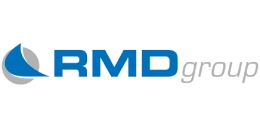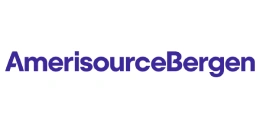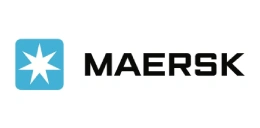Air Purifier Cost Model: The Purifier Price Pulse
_11zon.webp)
Air purifiers are appliances that enhance indoor air quality by eliminating pollutants like dust, allergens, smoke, volatile organic compounds (VOCs), and microbial particles. They work on various technologies such as HEPA (High-Efficiency Particulate Air) filters, activated carbon filters, UV-C light, ionizers, and photocatalytic oxidation. Their major components are usually fans or blowers, filter media, sensors, electronic controls, and metal or durable plastic housings. Some of the crucial characteristics of air purifiers include efficiency of filtration, airflow, noise levels, power consumption, and filter material durability. Air purifier production consists of mechanical and electronic component precision assembly, followed by quality audits to ascertain conformance to international standards like ISO, AHAM, and HEPA certification. Uses range from domestic homes to business offices, hospitals, industrial cleanroom environments, and mass public transport. Their benefits are in enhancing respiratory wellbeing, mitigating the risks of airborne infection, and overall indoor comfort. As sustainability gains prominence, air purifiers are transforming to include washable or biodegradable filters, power-efficient motors, and IoT-based smart monitoring systems. The outlook for the future is promising, backed by urbanization, pollution issues, and growing awareness of wellness and air quality levels worldwide. The global air purifier market size reached USD 14.5 Billion in 2024. According to IMARC Group, the market is projected to reach USD 27.3 Billion by 2033, at a projected CAGR of 6.95% during 2025-2033. The market for air purifiers is growing fast, driven by a number of demand drivers. Increasing levels of urban air pollution and growing public sensitivity towards respiratory health are fueling adoption in homes and workplaces. The healthcare industry is a major demand driver, with hospitals, clinics, and laboratories needing sterile indoor spaces. Indoor air quality standards and guidelines set by governments, especially for schools and commercial developments, are also fueling penetration. Apart from this, the COVID-19 pandemic also increased demand for high-efficiency air purifiers that can eliminate microbial particles, thus resulting in a lasting behavioral change among consumers and organizations. For the future, the future five years will witness higher adoption of smart air purifiers with IoT sensors, AI-based air quality monitoring, and connectivity with HVAC systems. For small urban apartments, there is also going to be higher demand for compact and portable models. Competitive edges arise from filter design innovation, hybrid purification systems, and energy-efficient designs. Challenges to the industry are the recurring cost of replacing filters and increasing competition from low-cost substitutes. From a sustainability point of view, the industry is moving toward green filters and renewable energy-powered devices. Industry reactions are through collaborations with smart home ecosystems and expansion in emerging markets with high growth pollution levels.
Trending Insights on Air Purifier: Latest News and Developments
- In September 2025, Dyson introduces the Dyson HushJetTM Purifier Compact, designed to provide whole-room purification with five times longer HEPA filter life, ultra-quiet operation, and high velocity airflow inspired by jet engines. A new age of air purification performance and design is being introduced with this introduction, which features Dyson's revolutionary HushJetTM Nozzle and represents a daring departure from the company's classic Air Multiplier technology.
- In June 2025, Coway, a wellness tech firm in South Korea, has introduced the Airmega 50, the smallest model in its array of air purifiers, to the European market. This most recent product, which prioritises mobility, performance, and peace of mind, introduces high-quality air purification into common areas.
- In March 2024, Oransi Introduces AirMendTM, a New HEPA Air Purifier. Oransi has created a unique patent-pending motor that is quieter, lighter, more powerful, more energy-efficient, all in a considerably smaller frame, after testing more than 700 prototypes.
Case Study on Cost Model of Air Purifier Manufacturing Plant:
One of our clients reached out to us to conduct a feasibility study for setting up a medium scale air purifier manufacturing plant. We developed a comprehensive financial model for the setup and operation of a proposed air purifier manufacturing plant in India. This plant is designed to produce 2,500 units of air purifier annually.
Manufacturing Process: Air purifier production is a systematic process incorporating mechanical, electrical, and filtration components into a unified system. Production is initiated with the preparation of housings, which are commonly made of injection-molded plastics or sheet metals and are cut, shaped, and painted. Filters are a necessary part: HEPA filters are pleated with micro-glass fibers or synthetic polymer fibers and activated carbon filters are filled with porous carbon granules for gas adsorption. UV lamps or ionizer modules, if present, are prepared in parallel. Assembly lines marry fans or blowers, motors, control panels, sensors, and power supply units into the case. Intermediate processes include installation of filtration stages, electrical circuit wiring, and affixation of safety features like overheat protection. Units are subsequently tested for vacuum and airflow to ensure performance against particulate and gaseous contaminants. Quality control involves testing for noise levels, measurement of energy efficiency, and adherence to standards such as CADR (Clean Air Delivery Rate). Cleaning, finishing, and imprinting are done prior to the final packaging process, which utilizes protective cartons to avoid damage during transit. The completed purifiers are sold to residential, commercial, and institutional end-users.
_11zon.webp)
Raw Material Required:
The basic raw materials required for air purifier manufacturing include plastics, metals, filter media, and electronic components. Key raw materials include:
- Filtration Media (Microglass Fiber)
- Nanofiber Coatings / Membranes
- Adhesives & Sealants (Polyurethane/ Hot-Melt/ Epoxy)
- Separator Material (Aluminium Foil Separators / Hot-Melt Beads)
- Metallic Frame Material (Aluminum / Galvanized Steel)
- EPDM Gaskets / Seals
- Spacers
- Tapes
- Edge Protectors
- Labeling and Packaging Material (Cartons and Shrink Wrap)
Machineries Required:
- Unwinding Machine / Roll Stand
- Pleating Machine (Knife Pleating/ Rotary Pleating)
- Hot Melt Applicator / Glue Dispenser
- Media Cutting & Trimming Machine
- End Cap Filling Machine
- Frame Forming / Cutting Machine
- Filter Assembly Press
- Curing Oven / Heating Chamber
- Gasket Foaming Machine
- Automatic Filter Testing Machine
- Leak Test System (Dop / Pao Aerosol Generator + Scanning Probe)
- Airflow Test Rig
- Edge Sealing & Tape Machine
- Labelling Machine
- Packaging Line
Techno-Commercial Parameter:
- Capital Expenditure (CapEx): Capital spending in an air purifier manufacturing facility involves various critical investments needed for proper setup and production. Early CapEx entails land purchase, civil works, and construction of the factory, such as specialized clean assembly areas. Essential machinery comprises injection molding machines for plastic cases, filter pleating and assembly machines, fan and motor assembly lines, and automated welding and cutting machines for sheet metal. Specialized facilities are needed for activated carbon filter packing and HEPA filter preparation. Other expenses include electronics assembly stations, airflow, CADR performance, and energy efficiency testing labs. Systems of quality assurance, automation lines, and robot assembly stations greatly increase scalability in production. Investments in infrastructure also involve utilities like compressed air, HVAC systems for clean environments, and water treatment plants. Material handling systems, IT infrastructure, and design software also constitute key components of CapEx. More and more plants incorporate renewable energy facilities, recycling plants, and energy-efficient architecture to achieve sustainability. Together, these investments form a strong manufacturing platform that can mass-produce air purifiers while following global safety and quality standards.
- Operating Expenditure (OpEx): Operating expenditure in an air purifier factory consist of all the reoccurring expenses required to maintain production and competitiveness in the market. Raw materials constitute a significant share with HEPA media, activated carbon, motors, and electronics being the high-value items. Utility costs comprise the consumption of electricity in injection molding, filter testing, and running assembly lines. Labor is the cost that includes wages, training, and managing the workforce in production, quality testing, and packaging divisions. Maintenance of the equipment, purchase of spare parts, and calibration of the test equipment are necessary recurring costs. Distribution costs such as logistics, warehousing, and dealer support also contribute considerably because of the bulkiness of purifiers. Marketing, customer support, and warranty service are other ongoing costs important in this people-oriented business. Depreciation of equipment, insurance charges, and adherence to environmental and safety standards also constitute OpEx. Expenses related to sustainability like used filter recycling, use of environment-friendly materials, and energy efficiency monitoring are gaining prominence. Successful OpEx management involves raw material purchasing optimization, assembly line automation, and lean manufacturing principles adoption to stay profitable in the face of competition. Furthermore, raw material cost ranges between 55-65%, labor cost ranges between 15% to 20%, and all other costs ranges between 15-30% in the proposed plant.
- Profitability Analysis Year on Year Basis: We assisted our client in developing a detailed cost model, which projects steady growth, with revenue rising throughout the projected period. Moreover, gross profit margins lie between a range of 15-25%, and net profit lie between the range of 10-15% during the income projection years, highlighting strong financial viability and profitability.
Conclusion:
Our financial model for the air purifier manufacturing plant was meticulously developed to meet the client’s objectives, providing an in-depth analysis of production costs, including raw materials, manufacturing, capital expenditure, and operational expenses. By addressing the specific requirements of producing 2,500 units of air purifier annually, we successfully identified key cost drivers and projected profitability, considering market trends, inflation, and potential fluctuations in raw material prices. This comprehensive financial model equipped the client with valuable insights into strategic decision-making, demonstrating our commitment to delivering high-quality, client-focused solutions that ensure the long-term success of large-scale manufacturing ventures.
IMARC's Financial Model Expertise: Helping Our Clients Explore Industry Economics
IMARC is a global market research company that offers a wide range of services, including market entry and expansion, market entry and opportunity assessment, competitive intelligence and benchmarking, procurement research, pricing and cost research, regulatory approvals and licensing, factory setup, factory auditing, company incorporation, incubation services, recruitment services, and marketing and sales.
Under our factory setup services, we assist our clients in exploring the feasibility of their plants by providing comprehensive financial modeling. Additionally, we offer end-to-end consultation for setting up a plant in India or abroad. Our financial modeling includes an analysis of capital expenditure (CapEx) required to establish the manufacturing facility, covering costs such as land acquisition, building infrastructure, purchasing high-tech production equipment, and installation. Furthermore, the layout and design of the factory significantly influence operational efficiency, energy consumption, and labor productivity, all of which impact long-term operational expenditure (OpEx). So, every parameter is covered in the analysis.
At IMARC, we leverage our comprehensive market research expertise to support companies in every aspect of their business journey, from market entry and expansion to operational efficiency and innovation. By integrating our factory setup services with our deep knowledge of industry dynamics, we empower our clients to not only establish manufacturing facilities but also strategically position themselves in highly competitive markets. Our financial modeling and end-to-end consultation services ensure that clients can explore the feasibility of their plant setups while also gaining insights into competitors' strategies, technological advancements, and regulatory landscapes. This holistic approach enables our clients to make informed decisions, optimize their operations, and align with sustainable practices, ultimately driving long-term success and growth.
Our Clients
Contact Us
Have a question or need assistance?
Please complete the form with your inquiry or reach out to us at
Phone Number
+91-120-433-0800+1-201-971-6302
+44-753-714-6104










